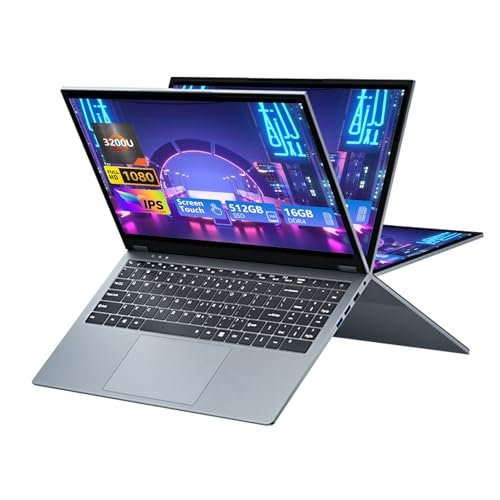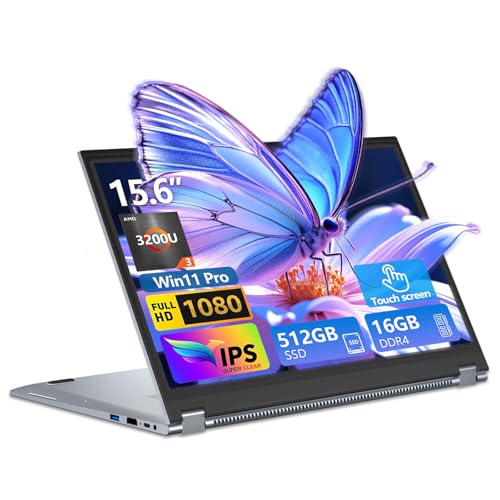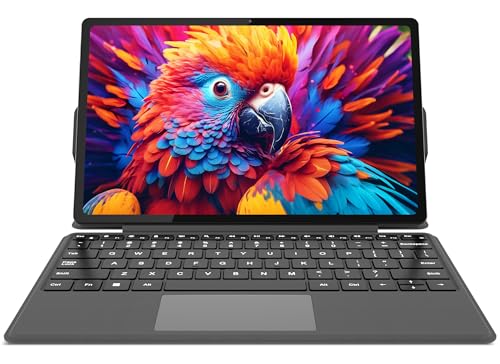As someone constantly juggling work and personal projects, I often found myself in a bind: a traditional laptop felt too clunky for quick notes or reading on the couch, but a tablet lacked the power and functionality for serious productivity. The thought of carrying multiple devices was exhausting, and the inability to seamlessly transition between tasks without a full-fledged keyboard or a precise input method was a significant roadblock. This problem needed solving to prevent a perpetual cycle of inefficiency and fragmented workflows. The right device would have helped me immeasurably, streamlining everything into one powerful yet portable solution.
Before diving into a purchase in the highly competitive world of 2-in-1 devices, it’s crucial to understand why someone would even consider such a hybrid. These machines are designed to bridge the gap between the robust capabilities of a laptop and the intuitive, portable nature of a tablet. They solve the common dilemma of needing a full computing experience on the go without the bulk, allowing for greater flexibility in various environments – from a coffee shop to a lecture hall, or simply relaxing on your sofa.
The ideal customer for a device in this category is someone who values versatility and portability above all else, but isn’t willing to compromise on core performance. This includes students who need to take notes, draw diagrams, and write papers; mobile professionals who present, travel frequently, or engage in remote work; and even creatives who enjoy sketching or light photo editing. Essentially, anyone whose workflow benefits from the fluidity of switching between typing, touching, and inking would find a 2-in-1 appealing.
However, a convertible device might not be the best fit for everyone. If you’re a hardcore gamer, a professional video editor, or someone who primarily uses their computer at a desk and needs extensive port options, a traditional laptop or desktop workstation might be a more suitable and cost-effective choice. Similarly, if your primary need is simply media consumption and light browsing, a more affordable, dedicated tablet might serve you better, as you wouldn’t be utilizing the full potential of a 2-in-1’s more powerful internal components.
When considering a purchase, think about these key factors: the processor and RAM for performance, the storage capacity (SSD is crucial for speed), screen size and resolution for visual quality, battery life for on-the-go usage, the number and type of ports for connectivity, and the overall weight and dimensions for portability. Finally, evaluate the ecosystem of accessories, like keyboards and pens, as these often complete the 2-in-1 experience.
- Next-gen, best-in-class laptop with the versatility of a studio and tablet, so you can type, touch, draw, write, work, and play more naturally
- Faster than Surface Pro 6, with a 10th Gen Intel Core Processor – redefining what’s possible in a thin and light computer. Wireless : Wi-Fi 6: 802.11ax...
Introducing the Microsoft Surface Pro 7
The Microsoft Surface Pro 7 arrived with a promise: to be the next-generation, best-in-class laptop with the true versatility of a studio and a tablet. This 12.3″ touch-screen device, powered by a 10th Gen Intel Core i5 processor, 8GB of memory, and a 128GB SSD, aims to redefine what’s possible in a thin and light computer. When you purchase this model, you primarily get the device itself and the power supply. It’s important to note that crucial accessories like the Surface Type Cover and Surface Pen, which unlock much of its versatility, are sold separately.
Compared to its predecessor, the Surface Pro 6, the Microsoft Surface Pro 7 boasts a significant leap in processing power with its 10th Gen Intel Core chip, offering faster performance and improved graphics. It also introduces the much-needed USB-C port, a modern connectivity staple that was notably absent from previous iterations. While it competes with other premium 2-in-1s like the iPad Pro and various Windows convertibles, the Surface Pro series has long been recognized for its tight integration of hardware and software, offering a full Windows experience in a tablet form factor.
This specific configuration of the Microsoft Surface Pro 7 is ideal for students, casual users, and business professionals who prioritize portability and versatility for tasks such as web browsing, document creation, presentations, light photo editing, and digital note-taking. It’s not designed for intensive gaming, professional video editing, or heavy graphic design where dedicated GPUs and larger storage capacities are usually required. Those needing more storage or higher-end performance might look towards configurations with an i7 processor or larger SSDs, or different product lines entirely.
Here’s a quick rundown of its strengths and weaknesses:
Pros:
* Exceptional versatility with Laptop, Studio, and Tablet modes.
* Beautiful, high-resolution 12.3″ PixelSense touch-screen display.
* Solid performance for everyday tasks and multitasking with the 10th Gen Intel Core i5.
* Modern connectivity with both USB-C and USB-A ports.
* Extremely lightweight and ultra-slim design for superior portability.
Cons:
* Essential accessories (Type Cover, Surface Pen) are sold separately, adding to the total cost.
* 128GB SSD storage can be limiting for users with large file libraries.
* Some users report the device can get warm under sustained heavy load.
* Battery life, while advertised as “all-day,” can vary significantly with usage, especially under demanding applications.
* Isolated reports of quality control issues with new units (e.g., receiving wrong models, minor display defects).
- 【2 in 1 Powerful Laptop】The touch screen laptop adopts Ryzen3 3200U processor up to 3.5GHZ, whether it is multitasking or running large software, it...
- Powerful AMD Performance: 2 in 1 laptop equipped with an AMD Ryzen 3 3200U processor (up to 3.5GHz) and AMD Radeon Graphics, this AMD laptop computer...
- 【2-in-1 Tablet & Laptop】Combining the mobility of a tablet with the power of a laptop, this 2-in-1 device features a detachable magnetic leather case...
Deep Dive into Features and Practical Benefits
Having used the Microsoft Surface Pro 7 extensively, I can attest to how its features translate into real-world benefits, fundamentally changing my daily workflow.
Unmatched Versatility: Laptop, Studio, and Tablet Modes
The standout feature of the Microsoft Surface Pro 7 is undoubtedly its transformative capability. It’s not just a laptop trying to be a tablet, or vice-versa; it genuinely excels as both.
In Laptop Mode, with the Signature Type Cover attached (a must-have accessory, despite being sold separately), the experience is remarkably akin to a traditional ultrabook. The keyboard is surprisingly comfortable with decent key travel for its slim profile, allowing for extended typing sessions without fatigue. The integrated kickstand is a marvel of engineering, offering a wide range of angles from upright for typing to nearly flat for drawing. This stability means I can comfortably use it on a desk, a tray table, or even my lap, making it a reliable companion for writing articles, managing emails, or engaging in video conferences. The benefit here is clear: full laptop productivity in a compact form factor, ready whenever and wherever I need it.
Switching to Studio Mode is as simple as lowering the kickstand to a shallow 15-degree angle. This position, combined with the Surface Pen (again, an essential, separate purchase), transforms the device into a digital canvas or a highly intuitive note-taking pad. As someone who often brainstorms or sketches ideas, this mode is invaluable. The PixelSense display’s responsiveness to the Surface Pen is exceptional, offering a natural pen-on-paper feel with excellent pressure sensitivity and tilt support. I’ve used it for annotating PDFs, sketching concepts, and taking handwritten notes during meetings, and it truly enhances creativity and retention. This solves the problem of needing to print out documents for markup or carrying physical notebooks, streamlining the entire creative and academic process.
Finally, Tablet Mode is achieved by simply folding the Type Cover back or removing it entirely. The Surface Pro 7 becomes a lightweight, powerful Windows tablet. While Windows 10’s tablet mode isn’t as touch-optimized as, say, iPadOS, it’s perfectly functional for browsing the web, watching videos, or reading e-books. The 12.3-inch screen is a fantastic size for media consumption, and the integrated kickstand still allows for hands-free viewing. Its ultra-slim and light design, starting at just 1.70 pounds, means holding it for extended periods isn’t a strain, making it my preferred device for unwinding with a movie or catching up on news. The benefit of this mode is pure convenience and portability for consumption-based tasks.
Robust Performance for Everyday Demands
Under the hood, my Microsoft Surface Pro 7, equipped with a 10th Gen Intel Core i5 processor and 8GB of RAM, delivers snappy performance for virtually all my daily computing needs. This generation of Intel processors, specifically designed for thin and light devices, truly redefines what’s possible in this form factor.
From rapid boot-ups thanks to Instant On, to effortlessly juggling multiple browser tabs, Office applications, and communication tools like Zoom or Microsoft Teams, this versatile device handles it all without a hitch. I regularly have Word documents, Excel spreadsheets, Outlook, and a dozen Chrome tabs open simultaneously, and the system remains smooth and responsive. It’s significantly faster than my old laptop, cutting down on frustrating waiting times and allowing me to move from one task to the next with ease.
The 128GB SSD, while on the smaller side for some, is incredibly fast, ensuring applications launch quickly and files transfer rapidly. For someone who primarily relies on cloud storage for larger files and doesn’t store extensive media libraries locally, this capacity is perfectly adequate. However, users with vast photo or video collections or a large software library might find themselves needing external storage or a higher-capacity model. It’s worth noting that under very heavy loads, such as prolonged video encoding or intense graphical tasks (which this device isn’t primarily designed for), I have noticed the device can get noticeably warm, and on rare occasions, some users have reported the device freezing, requiring a restart. For general productivity, however, these instances are uncommon.
Stunning Visuals and Intuitive Interaction with the PixelSense Display
The 12.3-inch PixelSense display on the Microsoft Surface Pro 7 is truly a visual treat. With a maximum resolution of 2736×1824 and a 3:2 aspect ratio, everything on screen, from text to images to videos, appears incredibly sharp and vibrant. The colors are rich and accurate, making it excellent for viewing photos, watching movies, or working on detailed documents. The higher resolution means more content can fit on the screen at once, reducing the need for excessive scrolling, which is particularly beneficial for productivity.
The touch responsiveness is flawless, making navigation intuitive and enjoyable. Whether I’m pinching to zoom on a map, scrolling through articles, or interacting with apps, the touch experience is fluid and precise. This, combined with the optional Surface Pen, creates a natural digital canvas that rivals dedicated drawing tablets. The ability to directly interact with content using my fingers or the pen feels far more natural and engaging than relying solely on a mouse and keyboard, fostering a more direct and efficient workflow.
Comprehensive Connectivity for Modern Needs
Microsoft finally listened to user feedback by including both a USB-C and a USB-A port on the Microsoft Surface Pro 7. This combination is incredibly practical. The USB-C port is future-proof, allowing me to connect to modern displays, docking stations, and charge compatible accessories with a single cable. It supports fast data transfer and power delivery, making it a versatile port. The inclusion of a traditional USB-A port is equally important, ensuring compatibility with older peripherals like external hard drives, mice, and keyboards without needing an adapter. This dual-port approach means I’m ready for both current and older technology, reducing dongle dependency.
Wireless connectivity is also top-notch, featuring Wi-Fi 6 (802.11ax compatible) and Bluetooth Wireless 5.0 technology. Wi-Fi 6 provides faster, more reliable wireless internet, especially in crowded networks, which translates to quicker downloads and smoother streaming. Bluetooth 5.0 ensures a stable and efficient connection to wireless headphones, keyboards, and mice, minimizing latency and extending battery life for these peripherals. This robust connectivity suite ensures I can stay productive and connected wherever I go.
Exceptional Portability and All-Day Battery Life
One of the most appealing aspects of the Microsoft Surface Pro 7 is its incredible portability. Weighing in at just 1.70 pounds and featuring an ultra-slim design, it’s genuinely easy to carry around all day without feeling weighed down. It slips effortlessly into almost any bag, making it my go-to device for commuting, travel, or simply moving between rooms in my home. The Platinum finish adds a touch of elegance, making it look as good as it performs.
The advertised all-day battery life of up to 10.5 hours (for typical usage) is a significant advantage. In my experience, for mixed usage including web browsing, document work, and some video playback, I can typically get through a good 7-8 hours, sometimes more, before needing to recharge. While this doesn’t always hit the advertised maximum under my specific usage patterns, it’s still more than enough for a full workday or a long stretch of classes. Furthermore, the fast-charging capability is a lifesaver, allowing the device to go from empty to approximately 80% charged in just over an hour. This means I can quickly top up during a coffee break or between meetings and be ready to go again. While some users have reported lower battery life under constant heavy load, for typical productivity tasks, it delivers.
Familiarity and Security with Windows 10 Home
The Microsoft Surface Pro 7 ships with Windows 10 Home, offering a familiar and intuitive operating system experience for most users. The benefits are numerous: access to the vast Windows application ecosystem, seamless integration with Microsoft Office 365 (sold separately), and robust security features. The password-free Windows Hello sign-in, which uses facial recognition, is incredibly convenient and adds a layer of quick, secure access.
With the free upgrade to Windows 11 available, users can look forward to an even more refined and modern interface, further enhancing the user experience. The integrated OneDrive cloud storage ensures that photos and files are kept safe and accessible across devices, which is vital for maintaining productivity and data security. The combination of powerful hardware and a robust, familiar operating system makes the Microsoft Surface Pro 7 a highly capable and user-friendly device.
What Users Are Saying
After scouring numerous online reviews, it’s clear that the general sentiment towards the Microsoft Surface Pro 7 is overwhelmingly positive. Many users, particularly students, highlight its convenience for academic purposes, allowing them to directly annotate notes and study materials. The device’s speed for everyday tasks and its stunning display frequently receive praise. The versatile kickstand, especially its “studio mode” capability for note-taking and drawing, is a fan favorite. While there have been unfortunate instances of receiving incorrect models (e.g., a Surface Pro 6 instead of a 7) or experiencing defects with used/refurbished units, along with isolated reports of unexpected screen issues or battery life not matching expectations under heavy load, the vast majority commend its performance, portability, and overall value. Many long-time Surface users also attest to it being a significant improvement over previous generations.
Final Thoughts and Recommendation
The constant struggle between needing the power of a laptop and the portability of a tablet is a common modern dilemma. The inability to switch seamlessly between these modes can severely hinder productivity, force users to carry multiple devices, and ultimately complicate what should be a straightforward workflow. The Microsoft Surface Pro 7 emerges as an excellent solution to this very real problem.
This device is a great fit because of its exceptional versatility, allowing you to fluidly transition between laptop, studio, and tablet modes to suit any task or environment. Its robust 10th Gen Intel Core i5 performance ensures that everyday tasks, from multitasking to content consumption, are handled with ease and speed. Furthermore, its ultra-slim and lightweight design, combined with decent battery life and rapid charging, makes it an ideal companion for anyone on the go. For those ready to redefine their portable computing experience, I highly recommend exploring the Microsoft Surface Pro 7. You can learn more and check it out for yourself by clicking here: Click here to transform your workflow.
Last update on 2025-11-21 / Affiliate links / Images from Amazon Product Advertising API




